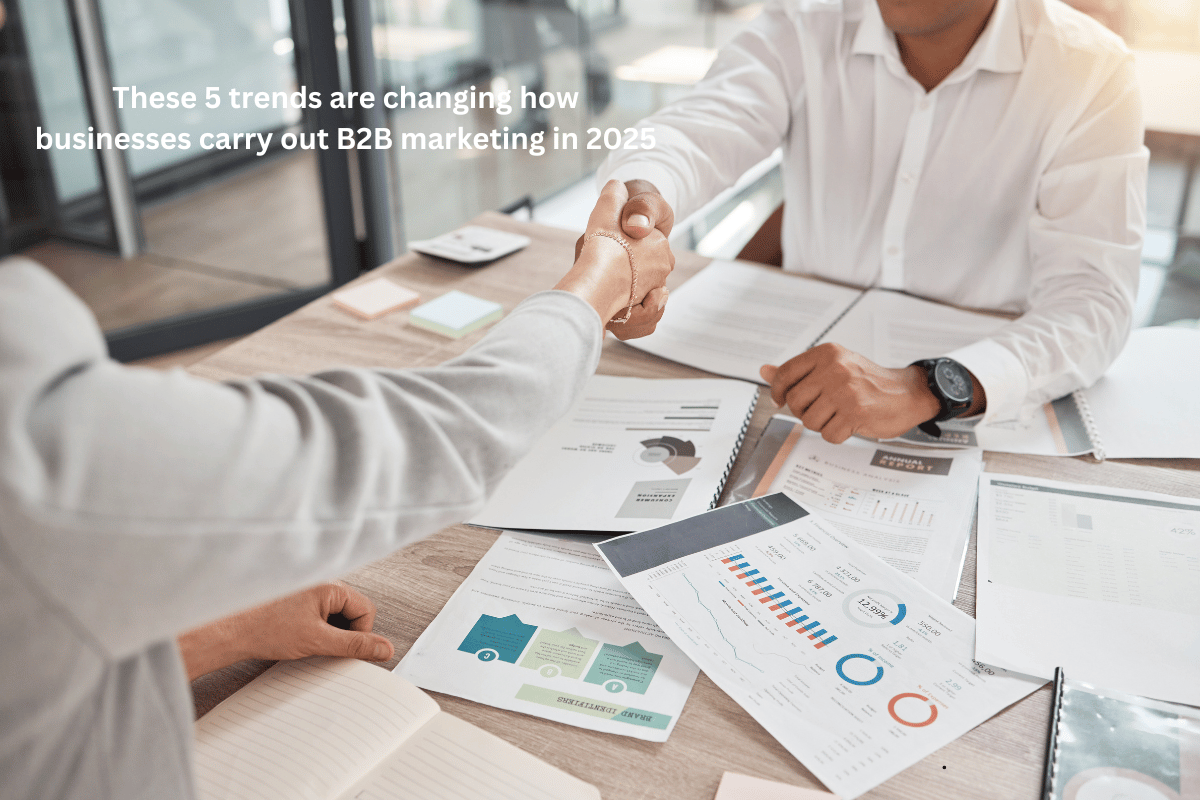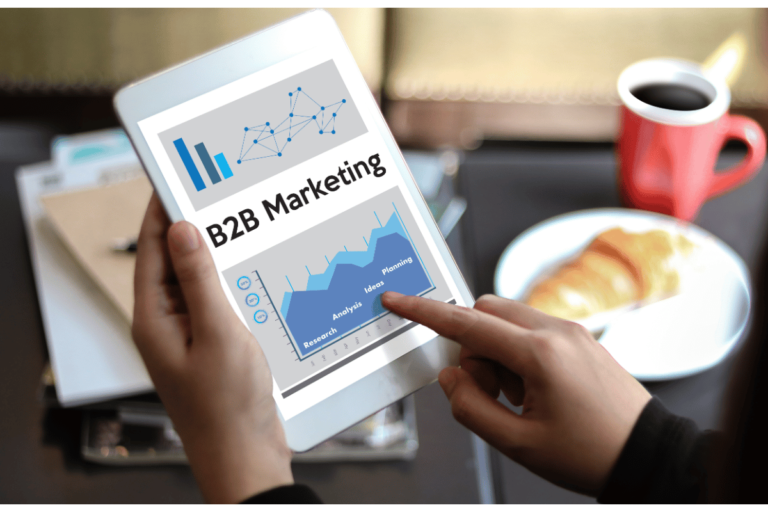These 5 trends are changing how businesses carry out B2B marketing in 2025
The world of B2B marketing is more resourceful than ever, if you plan on riding the wave. Historically, it has proven to be an efficient way for organizations to move the needle and transform clicks into conversions more rapidly, generating more leads at the end of the day. It’s no surprise that businesses across numerous industries seek ways to boost their B2B marketing strategies this year. It’s an easy and efficient way to develop super-targeted content for the targeted audience, improve sales, and expand brand awareness, among other perks.
Whether you know the advantages that B2B marketing can bring to your business or have just started familiarizing yourself with its results, knowledge remains power, which is why we’re assisting you in your journey toward success. Here are some of the most important tools and trends that are expected to shortcut companies’ ways to succeed in 2025 and beyond, so let’s check them out!
Podcasts
Podcasts have long transformed from entertainment and leisure-time possibilities into game-changers for the B2B marketing sector. Organizations such as HubSpot record millions of podcast downloads, so it’s easy to see what businesses are tuning in. Edison Research has recently disclosed that podcast listening activity has risen by over 50% within the past decade. In fact, 24% of individuals aged between 18 and 34 consume business-related podcasts regularly. So, how can you employ these tactics to attract your target audience and how can you build them?
First, it’s best to work with professionals with expertise and superior tools who can assess everything from demographics to spending habits within a given category. Companies that conduct data and market research advise requesters on how to level up their marketing in personalized ways.
Secondly, you need to ensure your listenership is specific and focused. From promotion to the audience, there are a few aspects to nail in order to put your organization in front of its target audience. Intriguingly created content may even draw in customers for whom podcasts aren’t a thing, yet. The key to successful B2B marketing through podcasts lies in a combination of good research, empathy, and genuineness, so tread mindfully if you plan on jumping on the bandwagon.
Smarketing
“Smarketing,” a fusion between marketing and sales, emerged as a core trend last year and has gained traction ever since across various offices around Europe and beyond. Often split or even in a race, marketing looks to merge these two business areas to generate measurable objectives that hold every member liable for their actions and improve the organization’s BTL.
Smarketing’s main point is to create shared strategies and goals in the departments dealing with sales and marketing in a synergic partnership. By aligning sales and marketing goals, businesses can improve the consistency of their messages across every consumer touchpoint. Eventually, such achievements can improve the consistency of the customer communication strategy and the buying rates.
Omnichannel quality
Today’s B2B purchaser asks for flawlessly synchronized experiences regardless of the touchpoint used, making transactions between traditional and digital channels a non-negotiable. Buyers already use an ever-rising range of apps to interact with brands, like mobile apps, conventional websites, social media channels, or even e-mail marketing campaigns. As for the latter, e-mail marketing is efficiently and profitably done, being the most rewarding channel to transform clicks into conversions. Data suggests that this marketing channel can generate a conversion rate of 2.4% for B2B brands and 2.8% for BDCs.
Each interaction needs to keep brand cohesion, mirroring and reinstating the business’s fundamental values and guarantees. This multi-channel engagement boils down to maintaining consistency across all activities, from creating the message to choosing the tone. Investments in robust omnichannel frameworks developed to guarantee all consumer touchpoints’ excellence are commonly used strategies you can consider exploring in 2025.
AI-based content creation
AI brings in new content creation opportunities by expanding the possibilities to personalize output. Personalization is key for organizations’ current success, so the fact that systems using machine learning and other AI subcategories can do it for brands saves them a lot of time – the most valuable resource. AI-based systems can assess bulks of data and spot patterns in human interactions, coming up with curated recommendations for practical content formats or topics. With AI, businesses can forge more meaningful and deep connections with the targeted audience while drawing in other like-minded individuals with purchasing power.
Regardless of how AI-based solutions may be, it’s important not to overindulge in them. AI should serve as an additional tool that improves strategic planning and creativity instead of substituting these capacities.
Sustainability
Rising awareness and concerns surrounding businesses’ social and environmental impact translate to a heightened need for companies to resort to sustainable solutions. While this lullaby may be as old as the hills, 2025 brings about a new challenge, namely the need for more transparent and credible disclosure from businesses regarding their operations and results. Marketers must prioritize these two qualities, and partners and buyers aren’t compromising on their investments but want to see comprehensible actions and measurable results.
The targeted introduction of sustainability into every marketing area is a good starting point to consider. Examples of green practices include but aren’t limited to integration with the organization’s ESG objectives, content creation that preserves resources like energy, and climate-neutral activities. For instance, trade fairs and live events empower businesses to introduce sustainable elements like carbon offsetting programs, reusable resources, and local partnerships, among others. These milestones can demonstrate to customers and stakeholders that sustainable progress isn’t an empty promise but a prioritized duty that yields visible results.
The bottom line
Businesses can improve their leads and bottom line by making the most of the current B2B marketing trends separating successful from failing ventures. Is yours ready to lead by example through practices like the abovementioned ones? Or are you committed to other B2B marketing methods that you’d like to share? Hopefully, 2025 is, or continues to be, your year.






